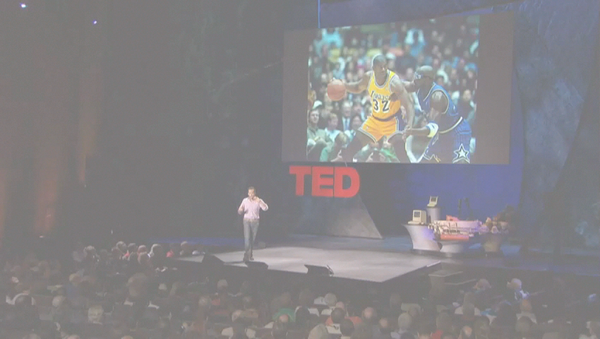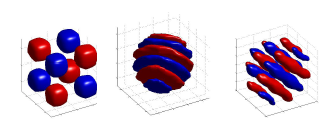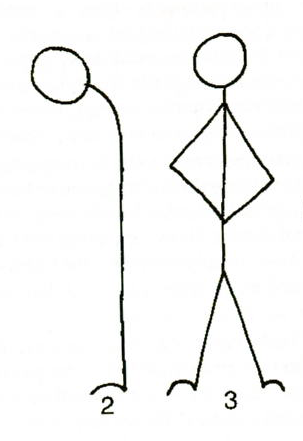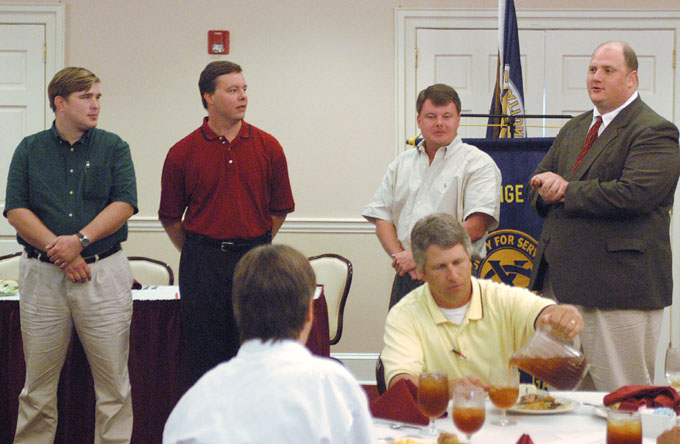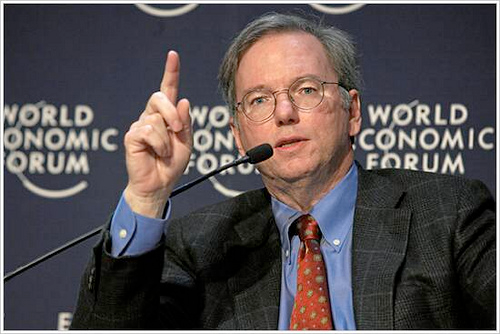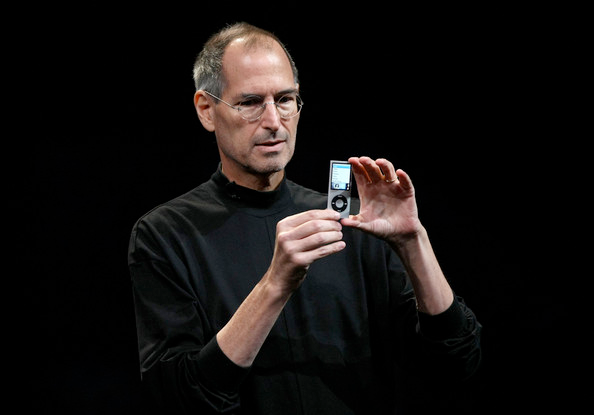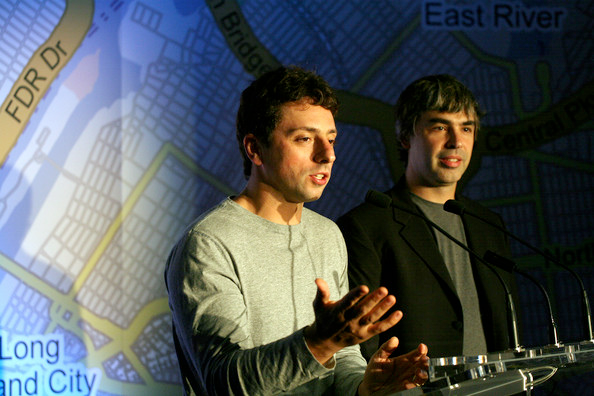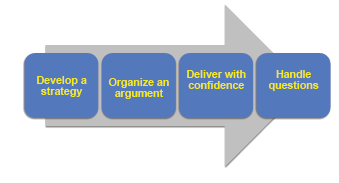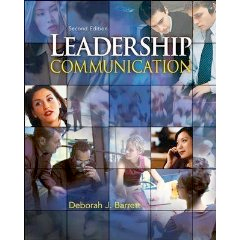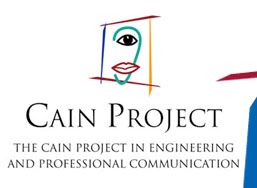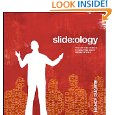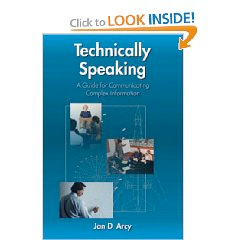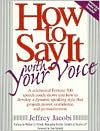Panel discussion presented by Tracy Voltz at the 2010 NSF ADVANCE Workshop: Negotiating the Ideal Faculty Position, A Workshop for Underrepresented PhDs and Postdocs in Science, Engineering and Psychology
September 19-21, 2010
High impact presenters
Size up the situation
Organize an argument
Convey confidence
Integrate visuals
Handle questions
http://www.uaex.edu/Other_Areas/news/_archives/April2003/Stacy15.gif
Analyze audience
Who is your audience?
Why are they interested?
How much do they know?
What criteria do they use to make decisions?
How will they benefit?
What are their concerns?
http://www.apple.com/jobs/us/corporate.html#retailcorp
Tailor message to audience
Non-Experts
Make it interesting
Provide background
Define terms
Distinguish between fact and opinion
Use examples, analogies, visuals
Experts
State how and why
Present limited background info
Use language of discipline
State assumptions and conclusions
From: Barrett, Deborah (2007).
Leadership Communication .
Mixed audience strategy
Define key terms
Signal section headings
Support points with specific examples
Use analogies
Mention in-depth points periodically
Reiterate your main points as you proceed
Avoid jargon
End with a general summary
Academic job talk
What problem are you investigating?
Why is it important?
How does your work fit into the context of your field?
What’s your approach?
What did you find that was significant?
What are the implications of your findings?
How is your work novel?
Typical but difficult
Chronological narratives
Inductive organization
http://www.uni-koblenz.de/~vladimir/breviary/dilbert-powerpoint.gif
Inductive example
Deductive example
The challenge
Start strong
Introduction
Motivate interest
State key point(s)
Preview topics
Establish credibility
Memorize opening
__________________
No apologies
No reintroduction
No “Today I’m gonna talk about . . . ”
Hans Rosling, TED conference 2006
(External Link)
Wolfe’s strong start
(External Link)
Directional hypercomplex wavelets for multi-dimensional signal anlysis and processing
Candidate’s name
Directional hypercomplex wavelets for multi-dimensional signal analysis and processing
Candidate’s name
Electrical and Computer Engineering
Sept. 20, 2010
Outline
Introduction
Methods and applications
Results
Conclusions
Outline
Diagnosis of air quality priorities
Primary and secondary pollutants
High-order direct sensitivity analysis: Methods and applications
Uncertainty analysis
Optimization
Integrated air quality management: Experiences in Georgia
Challenges, priorities, planning
Vision for future research
Outline
Diagnosis of air quality priorities
High-order direct sensitivity analysis: Methods and applications
Integrated air quality management: Experiences in Georgia
Vision for future research
End strong
Conclusion
Memorize
Send cue
Restate&summarize
Spell out implications
________________________
No “That’s it.”
No exaggerating
No ?s slide
Questions????
Conclusion
The network is capable of identifying the behavior of the family curve.
The amplitude and frequency values obtained with the ANN are close to those obtained by means of the 2-DOF model.
The accuracy in the results obtained can be improved if a greater number of samples is used.
Other combination of network parameters could allow getting better results.
The reduction in computation time is drastically reduced when using the ANN.
Identifies behavior of the family curve
Closely approximates amplitude and frequency of 2-DOF model
Drastically reduces computation time
Transitions
Create coherence
Make intuitive connections explicit
Weak verbal cues
“And another thing”
“So”
“Next”
Strong verbal cues
Sequence
Contrast
“However”
“On the other hand”
Causality
“Therefore”
“Consequently
Sample transitions
“So let’s jump into parts I thought were interesting.”
“Next I’m gonna talk about Microsoft.
“In contrast to Apple’s focus on ordinary consumers, Microsoft targets business users.”
Presenting data
Relevant results that support key points
BIG picture little picture
4-step explanation:
Question
Describe
Report result
Interpret result
Leadership presence
(External Link)
Enter with authority
Focus your energy
Pause before starting
Establish eye contact
Limit movement
Speak confidently
Convey confidence
(External Link)
Stance
Gestures
Eye contact
Voice quality
Stance and posture
(External Link)
(External Link)
Stance and posture
Worst Practices
Block screen
Stomp feet
Cross feet
Rock, sway, pace
Slouch
Lean
Best Practices
Chin up
Feet under hips
Shoulders relaxed
Weight distributed
Knees slightly bent
Gestures to avoid
Fidgeting
Fingers
Pen or laser pointer
Pockets
Hair
Hands on hips
Crossing arms
Gripping podium
Clasping hands
(External Link)
Effective gestures
Power gestures
Concept gestures
Process gestures
Position
Scale
Practice gestures
“An atom consists of a
dense, central nucleus surrounded by a cloud of electrons. ”
“A
low pH indicates a
high concentration of hydronium ions.”
“The particles must be
dispersed evenly in the fluid.”
“It’s about the size of a
quarter .”
That is
unacceptable !
Worst practices
Stare at screen
Glance at floor or ceiling
Read slides or notes
Best practices
Direct
Sustained
Distributed
(External Link)
Voice quality
Volume
Pacing
Inflection
Articulation
Fillers
http:/docuguy.files.wordpress.com/2009/03/marissa_mayer_google_io-5_350x467.jpg
Handling questions
(External Link)
Summary
References
Barrett, Deborah, Leadership Communication. McGraw-Hill, 2007.
Materials developed by Cain Project in Engineering and Professional Communication, www.cnx.org
Duarte, Nancy. Slide:ology. O’Reilly, 2008.
D’Arcy, Jan. Technically Speaking. Columbus: Battelle Press, 1998.
Jacobi, Jeffrey. How to Say It with Your Voice. Paramus: Prentice Hall, 2000.
Repository of interesting talks: Hans Rosling “The Best Stats You’ve Ever Seen”
(External Link)
Image references
(External Link)&imgrefurl=http://www.mediabistro.com/baynewser/google_stuffgoogle_ceo_defends_company_against_wall_street_journal_in_pages_of_wall_street_journal_144817.asp&usg=__3mt9PhrO_oWQ7ikSSioN2WzemCc=&h=334&w=500&sz=80&hl=en&start=16&um=1&tbnid=Uo8sDZW4wbUrjM:&tbnh=87&tbnw=130&prev=/images%3Fq%3Deric%2Bschmidt
%26hl%3Den%26client%3Dfirefox-a%26rls%3Dorg.mozilla:en-US:official%26sa%3DN%26um%3D1
(External Link)
Bill Gates (Jeff J Mitchell / Getty Images)
(External Link)&imgrefurl=http:www.newsweek.comid142537&usg=__kZaLDBaXZY0ztGbJYA71P990hfE=&h=422&w=300&sz=20&hl=en&start=80&um=1&tbnid=vqtK6g2kFK_sSM:&tbnh=126&tbnw=90&prev=/images%3Fq%3Dbill%2Bgates%26ndsp%3D20%26hl%3Den%26client%3Dfirefox-a%26rls%3Dorg.mozilla:en-US:official%26sa%3DN%26start%3D60%26um%3D1








